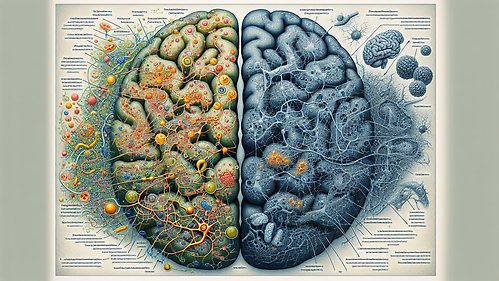Research projects in Bergquist Group
Within our field different subject disciplines meet to jointly develop tomorrow's analytical technologies to gain new knowledge of chemical and biological processes in diseases. My research has mainly focused on understanding what happens in patients suffering from various neurodegenerative diseases such as Parkinson's, Alzheimer's, amyotrophic lateral sclerosis (ALS) and multiple sclerosis (MS). We study these phenomena, in-situ or ex-vivo, in brain tissue and cerebrospinal fluid.
The step from clinical neuroscience to analytical chemistry is not that big, especially not in the field of neurochemistry, where both disciplines are of great importance. The kind of analyses that my research group is conducting involves methods to measure substances that can serve as biomarkers for early diagnosis and contribute to the understanding of what initiates the disease process. We measure not only the individual substances but also seek patterns and monitor how they change during illness. Our specialty is the analysis of cerebrospinal fluid and its chemical composition.
Analytical neurochemistry and clinical chemistry
With today's techniques, we can map the entire human genome and thus find mutations and gene expression that lead to an increased risk of certain diseases. However, these hereditary forms (familial) only account for about 20 % of the cases of the diseases we study. The remaining sporadic forms cannot be explained at the gene level, but in order to detect these cases at an early stage, we need to find markers at the protein, peptide or metabolite level. Therefore, we engage in so-called proteomics or metabolomics studies, where we investigate the protein content and the presence of various metabolites in tissues and body fluids.
The human genome could, in principle, code for over 1,000,000 proteins if we take into account all the post-translational modifications that can occur (over 450 different ones are known today). In disease, protein levels can fluctuate rapidly and they can also affect other protein complexes through indirect mechanisms. We therefore take advantage of modern proteomics methodologies such as selective sample preparation, liquid-based multidimensional separation and high-resolution mass spectrometry to generate biochemical patterns of the protein and peptide content in the samples. By comparing patterns from patients with certain diseases with healthy individuals or even following the same individual during treatment (e.g., pre- and postoperatively or pre- and postmedication), we can identify potential biomarkers for the disease. Also, the presence of metabolites such as amino acids, amines, sugars, carbohydrates, steroids, and lipids changes rapidly in response to disease, food and drug intake, physical activity, etc. This makes it possible to combine proteomic analyses with metabolomics analyses where we use similar methodology to study changes in the metabolome.
Once we have identified biomarkers for a particular disease and established how the pattern of these markers differs between sick and healthy individuals, the pattern can be used as a diagnostic tool. It is also possible to simplify the analyses by measuring only the biomarkers that we know are important for the disease in question and to refine the methods to enable detection of the biomarkers even at the low levels that that are present early in a disease process.
We specialize in the study of brain tissue and cerebrospinal fluid, but it is also often possible to follow these changes in non-invasive or low-invasive samples such as dry blood spots, saliva or urine. Crucial to our success in the hunt for biomarkers is that we currently work together with skilled clinicians that can provide us with high quality clinical material from well-diagnosed patients.


